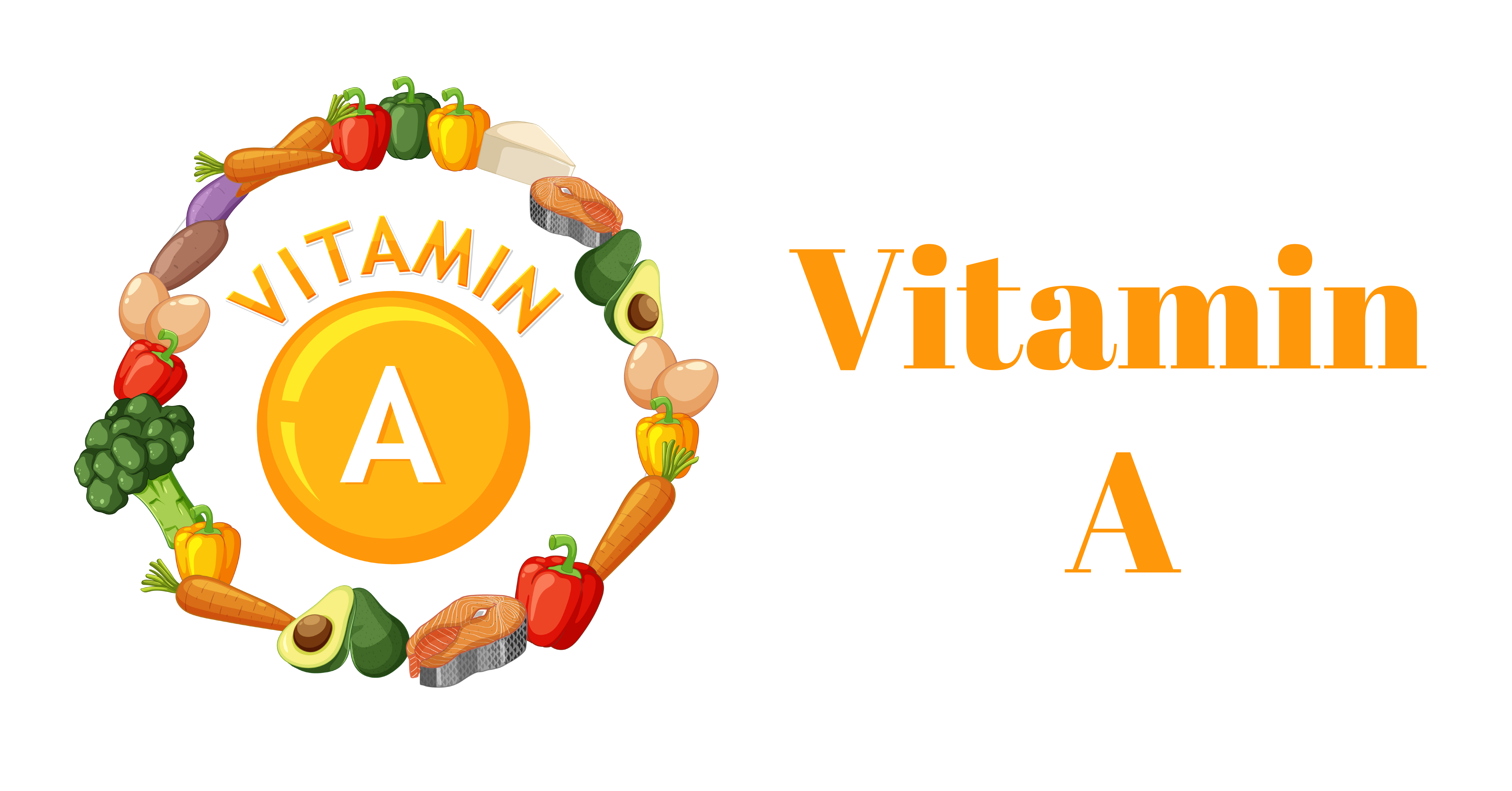Introduction:
In the vast realm of nutrition, one nutrient stands out as a powerhouse for our overall health – Vitamin A. Known for its crucial role in maintaining healthy vision, Vitamin A goes beyond just supporting eyesight. In this comprehensive guide, we’ll delve into the wonders of Vitamin A, exploring its functions, sources, benefits, and the impact it has on our well-being.
Understanding Vitamin A:
Vitamin A is a fat-soluble vitamin that plays a pivotal role in various bodily functions. It is essential for maintaining healthy skin, promoting proper immune function, and supporting vision in dim light. There are two main types of Vitamin A: preformed vitamin A (retinol and its esterified form, retinyl ester) and provitamin A carotenoids. The latter is found in colorful fruits and vegetables and can be converted into active vitamin A in the body.
Sources of Vitamin A:
- Animal Sources:
- Liver (beef, pork, chicken)
- Eggs
- Dairy products (milk, cheese)
- Fish (salmon, mackerel)
- Plant Sources:
- Carrots
- Sweet potatoes
- Spinach
- Kale
- Mangoes
- Apricots
Consuming a diverse range of foods ensures an ample supply of Vitamin A in our diet, contributing to our overall health and well-being.
The Benefits of Vitamin A:
- Promotes Healthy Vision: Vitamin A is renowned for its role in maintaining eye health. It is a key component of rhodopsin, a protein in the eyes that allows us to see in low-light conditions. Adequate Vitamin A intake helps prevent night blindness and supports overall vision.
- Supports Immune Function: Vitamin A is essential for a robust immune system. It plays a crucial role in the development and function of immune cells, helping the body fend off infections and illnesses.
- Maintains Healthy Skin: Our skin serves as a barrier against external threats, and Vitamin A contributes significantly to its health. It promotes cell turnover, preventing dryness and supporting the production of new, healthy skin cells.
- Antioxidant Properties: As an antioxidant, Vitamin A helps combat oxidative stress in the body. This, in turn, reduces the risk of chronic diseases and supports overall health.
The Consequences of Vitamin A Deficiency:
Insufficient intake of Vitamin A can lead to various health issues, including:
- Night Blindness: A classic symptom of Vitamin A deficiency, night blindness impairs the ability to see in low-light conditions.
- Dry Skin and Hair: Vitamin A deficiency can result in dry, flaky skin and dull, dry hair.
- Weakened Immune System: Inadequate Vitamin A compromises the immune system, making the body more susceptible to infections.
- Impaired Growth: Vitamin A is crucial for proper growth and development, especially in children. Deficiency can lead to stunted growth.
Balancing Act: Avoiding Vitamin A Toxicity
While Vitamin A is crucial for good health, too much of it can lead to toxicity. This usually occurs when taking high-dose supplements, as excessive intake of preformed Vitamin A from animal sources is rare. Vitamin A toxicity can cause symptoms such as nausea, dizziness, and, in severe cases, can be harmful to the liver.
It’s essential to strike a balance and obtain Vitamin A through a varied diet, focusing on both animal and plant sources. This ensures a steady and safe supply of this vital nutrient.
Recommended Daily Intake:
The Recommended Dietary Allowance (RDA) for Vitamin A varies by age and gender. As of current guidelines:
- Adult males: 900 micrograms per day
- Adult females: 700 micrograms per day
- Pregnant women: 770 micrograms per day
- Breastfeeding women: 1,300 micrograms per day
It’s worth noting that these recommendations are for both preformed Vitamin A and provitamin A carotenoids.
Incorporating Vitamin A into Your Diet:
- Colorful Fruits and Vegetables: Embrace a rainbow of fruits and vegetables. Carrots, sweet potatoes, spinach, and kale are not only rich in Vitamin A but also offer an array of other essential nutrients.
- Eggs and Dairy: Include eggs, milk, and cheese in your diet for a dose of preformed Vitamin A. These foods are versatile and can be incorporated into various meals.
- Liver and Fish: While liver and certain fish are high in Vitamin A, it’s crucial not to overconsume them due to their high retinol content. Moderation is key.
- Supplements: If you struggle to meet your Vitamin A requirements through food alone, consider supplements. However, it’s advisable to consult with a healthcare professional before starting any supplementation.
Conclusion:
In the intricate tapestry of human health, Vitamin A is a thread that weaves through various aspects of well-being. From maintaining clear vision to supporting the immune system and promoting healthy skin, its significance cannot be overstated.
As we navigate our dietary choices, let’s be mindful of including a diverse array of foods that provide the essential nutrients our bodies need. By embracing a diet rich in Vitamin A, we not only safeguard our health but also revel in the vibrant tapestry of flavors and colors that nature has to offer. So, let’s celebrate the wonders of Vitamin A and embark on a journey towards a healthier, more vibrant life.


1 thought on ““Visionary Vitamin A: See the World and Your Health in a New Light!””